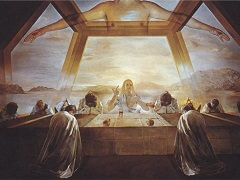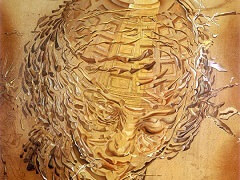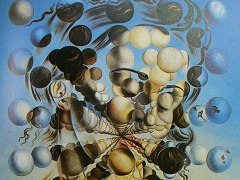La Gare de Perpignan, 1965 by Salvador Dali

The Perpignan railway station held special significance for Dali, who had proclaimed it to be the "Center of the Universe" after experiencing a vision of cosmogonic ecstasy there in 1963.
The painting shows the railway station of Perpignan, but with various intrinsic additions, which are examples of surrealistic techniques. A locomotive is seen as if it is coming out of nowhere, and there is a representation of the crucifixion of Christ along with other related aspects. The sacrifice of the son is imaged in the form of Christ on the Cross, with his crown of thorns, floating in the center of the composition. The bleeding wound of Christ is associated with the farmer's fork (on the right) thrust into the ground (as a fertility ritual). Dali is represented twice in the vertical axis: he appears in the light at the center of the image, seen from below, floating with arms spread, and again at the top of the painting.
La Gare de Perpignan encompasses several artistic techniques. There are several axes of symmetry, and a lot of emphases were placed on the use of colors so as to depict light in various effective ways. Earthly colors such as dark brown and yellow are used, and different gradients of these two colors are used throughout the painting.























